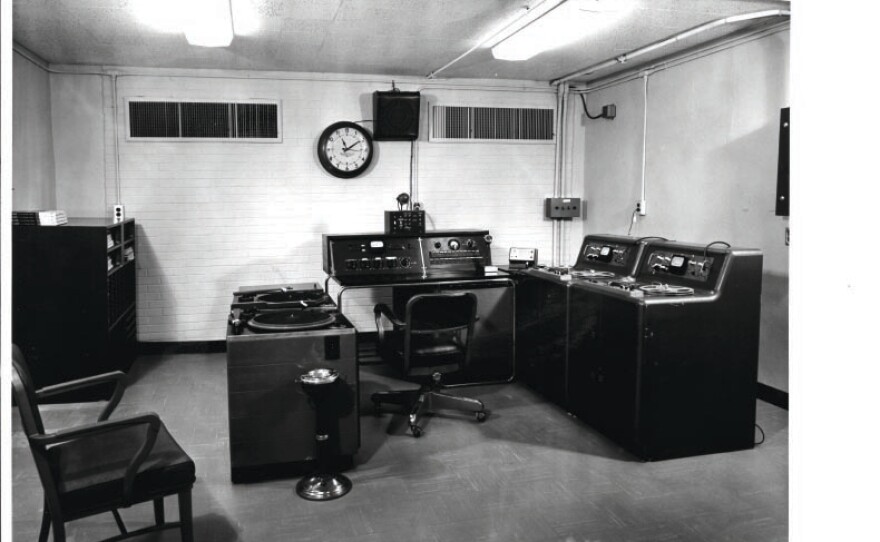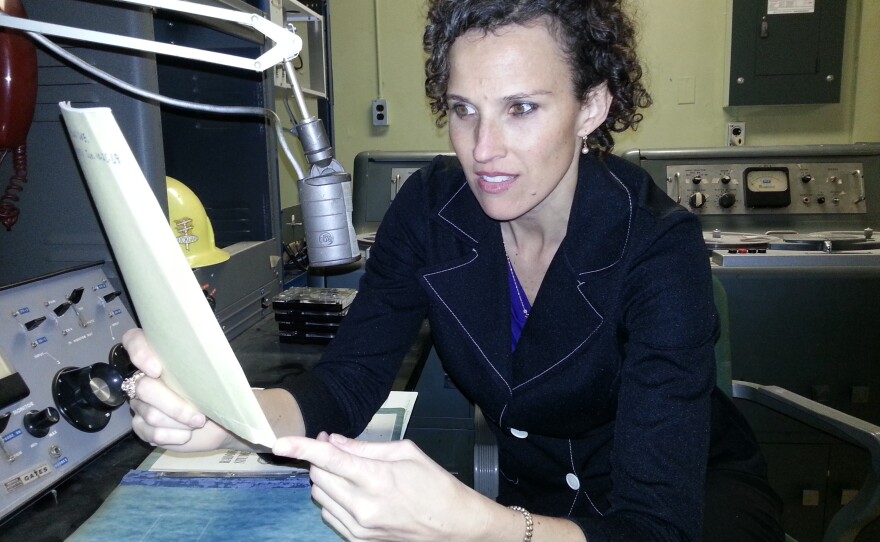There's a bunker beneath WBT Radio's transmitter on Nations Ford Road in Charlotte where time has stopped. The shelter was built decades ago in the event of a nuclear attack. Today it's a perfectly-preserved relic of Cold War fear that's gained new relevance, as WFAE's Julie Rose reports.
The secret bunker is part of office lore WBT Radio old-timers whisper to the newbies. That's how radio host Mike Collins learned of it, working there in the 1980s – long before he moved to WFAE.
"I remember being amazed that it would really exist because, you know, in the event of a nuclear attack, we wouldn't be here to broadcast," says Collins, with a laugh.
There was a certain naïveté in 1962, when school children were learning to duck under their desks in atomic bomb drills and President John F. Kennedy was taking to the air waves with dire news of of Soviet missiles in Cuba.
The Cuban Missile Crisis prompted President Kennedy to launch the emergency broadcast system in 1963 and outfit radio stations all over the country with doomsday bunkers that could bring his voice to the American people during a national crisis. WBT got one since it was one of the nation's oldest and most powerful stations with a night time signal that stretches from Canada to Cuba.
In fact, during the Cuban Missile Crisis, WBT was beaming pro-American propaganda to Cuba with a program called "Radio Liberty."
WBT Chief Engineer Jerry Dowd has preserved that original bomb shelter with the care of a museum curator. He keeps a picture from 1963 on hand to prove it. With that photo in hand, we head downstairs into a chilly basement with government-issue green walls.
"As you can tell, not a lot has changed," he chuckles. "The clock has stopped."
Literally. At just after 6 – a.m. or p.m.? Would it even matter if an atomic bomb went off?
Everything else still works. And the emergency supplies to keep some poor engineer alive and broadcasting for up to 60 days are still here, too.
"We have a leftover can of survival crackers that were date coded from April 1963," says Dowd, with a gesture to the can. "We had drinking water. The most important thing we had was the sanitation kit."
He picks up a cardboard bucket with a plastic donut-like lid: "It's a porta-potty."
And there are giant turntables poised to broadcast the most natural of things for the end-of-times.
"This was a church program, I believe, that we had recorded in 1955," says Dowd, lifting a dusty vinyl record up off the spindle.
Needless to say, the bunker has never been needed.
As the Cold War ended, dozens of them across the country collected dust, until the mid-90s when the national emergency alert system was expanded and a new wave of radio stations got emergency shelters designed to withstand an enemy attack.
Then Hurricane Katrina hit the Gulf of Mexico. While other radio and TV stations went silent, WWL in New Orleans went into its bunker.
"That served as kind of a staple in the community and a source of information for citizens when a number of the other broadcast facilities were off the air," says Antwane Johnson, who heads the emergency public alerts and warnings program for FEMA.
After Katrina, Johnson says FEMA realized the main reason for these doomsday bunkers was probably not an enemy missile anymore – it was Mother Nature. Millions of federal dollars have since built a network of nearly 80 high-tech emergency shelters to withstand hurricanes, tornadoes, solar flares - even an electromagnetic pulse that could cripple the nation's power grid.
FEMA keeps the technical details under wraps, but Jerry Dowd leads me outside to see WBT's new emergency shelter. It's actually two above-ground sheds fortified by . . . well, I don't know what. As Dowd opens the door, there's a loud, sucking sound like a vacuum seal coming apart.
We step inside. Dowd let's the heavy door slam shut.
"Now, for giggles and grins, turn your cell phone on and see if you can get any signal," he instructs.
My phone gets no signal.
Dowd smiles, but won't say another word.
The point is clear: A 21st Century doomsday calls for lots more than dusty turntables and survival crackers in a cinder block basement.






